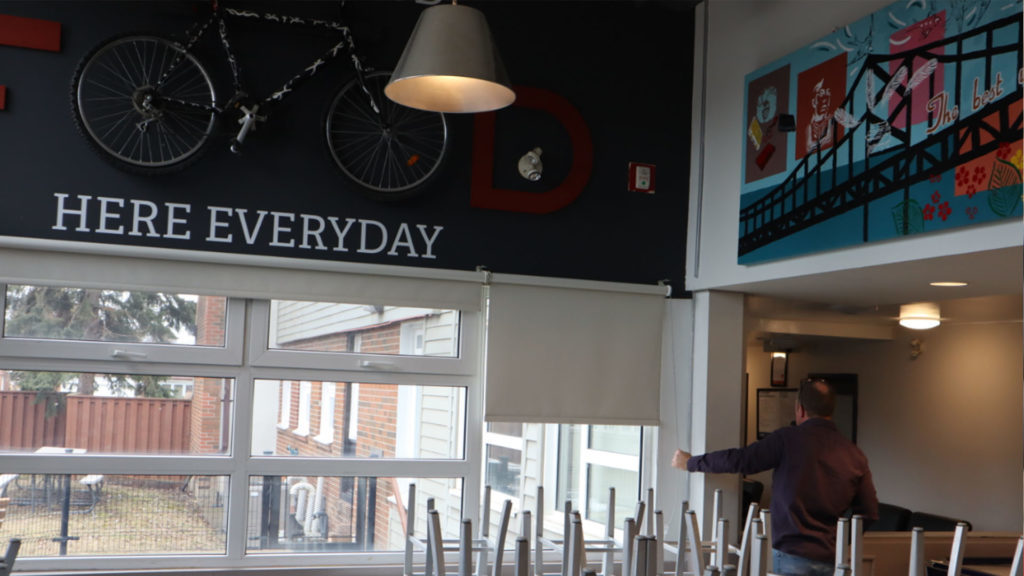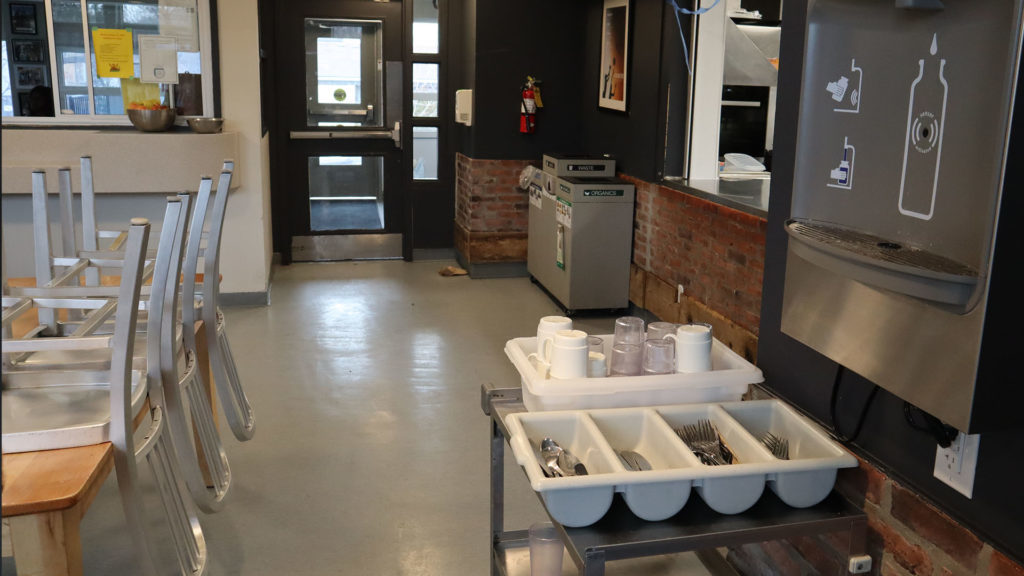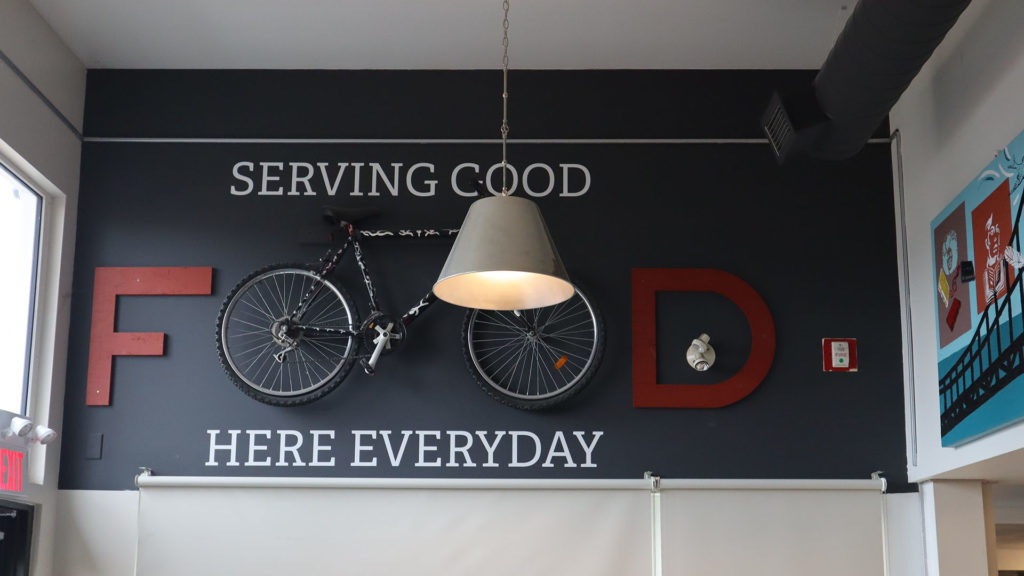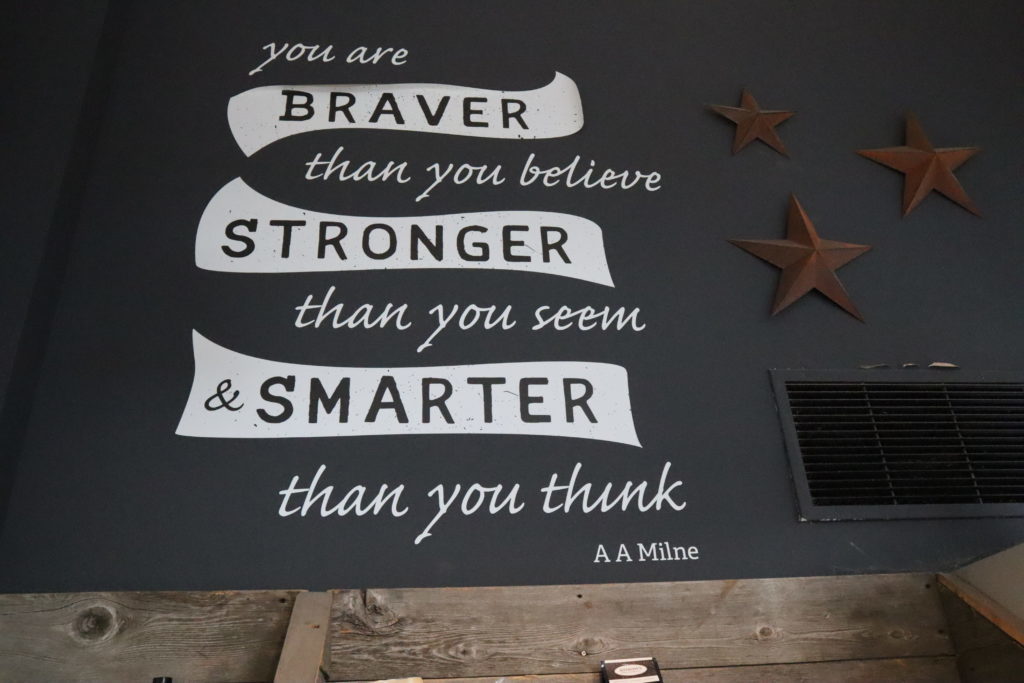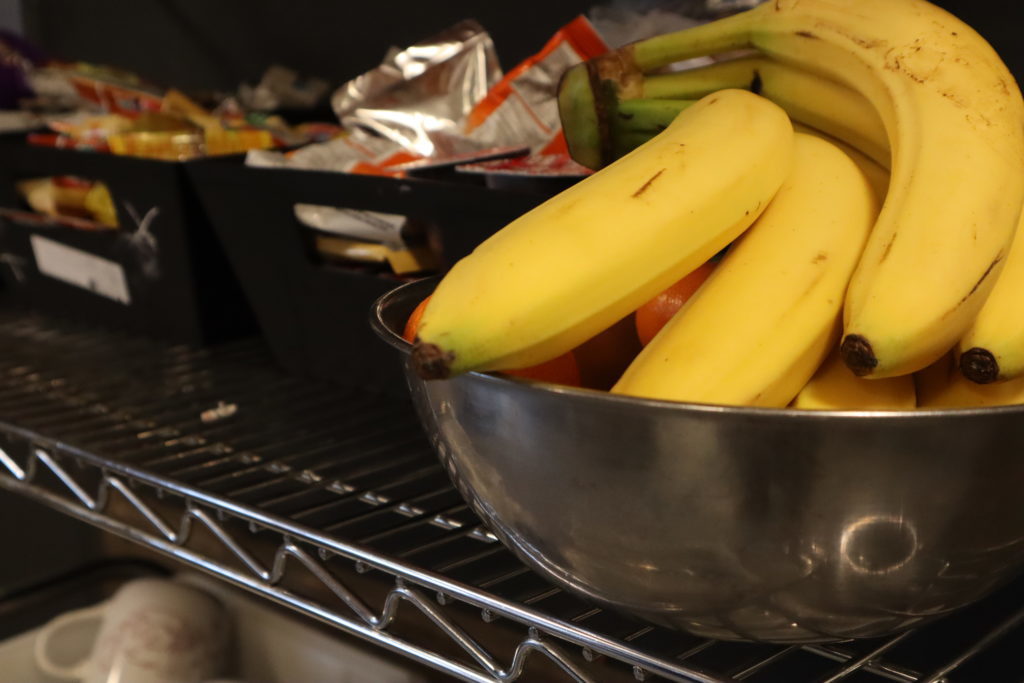By Allison Hannaford
Nestled in a quiet, residential, Rexdale neighbourhood, near the corner of Warrendale Court and Kendleton Drive, lies a long welcoming building, where homeless youth can find the support that they need, giving them the foundation to thrive.
The steps leading up to the door bear a message stencilled in script, “The race is not for the swift but those who endure to the end! The future is in your hands!” A gentle breeze blowsthe light scent of mild winter weather past the brick and sided home where a bright graffitied “strive for greatness” is painted on its end.
This is the refuge for many young Torontonians. This is YWS.
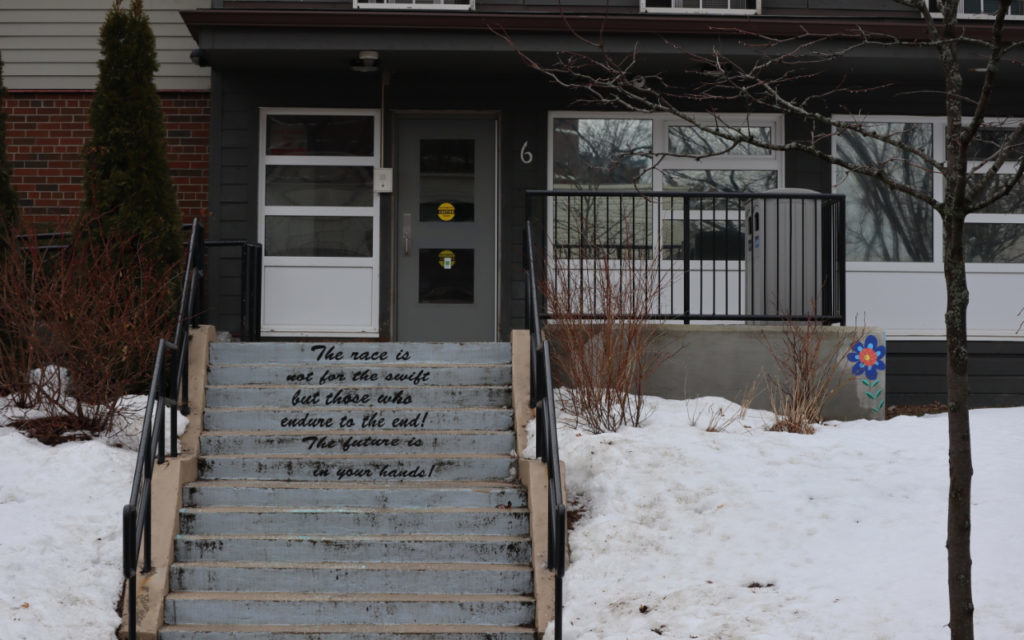
What is 500 in five?
Youth Without Shelter houses 33 young people at any given time. In 2019, it announced its ambitious new initiative called “500 in five” that would transition 500 from homelessness to stable living, defined as “income, a roof, a support network and the opportunity to pursue interests or goals” within five years; almost doubling their current placements.
“Ending homelessness, one youth at a time, one step at a time.”
YWS vision
Since the shelter opened in 1986, more than 5,000 youth have come through its door. This shelter is different because it identifies the unique needs of its clients, understanding that many have experienced some form of trauma – physical abuse, emotional abuse or abandonment. For example, executive director Steve Doherty tells of children who have been shipped to Canada for a better life with relatives but who are abandoned to fend for themselves while those who promised to care for them collect their support money.
Youth Without Shelter’s vision is “ending homelessness, one youth at a time, one step at a time.”
Rescuing youth
In their 2019 impact report, YWS shared a quote from a former client: “I honestly didn’t think I would make it. I was in a really bad place. Traumatized and damaged. YWS changed my life for the better. I learned not only to care for myself but for my future.” (Clients’ names have been changed or omitted for their protection and privacy.)
Now, one year into their five-year plan, Doherty talks about how far they’ve come, whether they think they’re on track, and what specific challenges Toronto faces. YWS is integrating special supports, considering expansion, and fulfilling the on-going need for financial support.
“Somebody asked me, ‘500 in five, you think we can do that?’ and I said, ‘No, not the way we are right now. But we’re going to change. We’re going to grow.’”
Steve Doherty, executive director YWS
Doherty walks through the shelter, beginning in the common area. A television blares alone in the corner. At two o’clock in the afternoon most of the residents of YWS are either in high school, college, or university. Beyond the pass-through window, cooks can be seen getting ready for dinner. Five large pans of seasoned chicken breasts sit ready for the oven. In a nearby office, a telephone rings. Voices carry. There’s laughter. Doherty stops briefly to say hello to colleagues. “Someone was a big fan of [the author] A.A. Milne,” he says, pointing to the large quotation stencilled on the wall over the dining tables. “You are braver than you believe, stronger than you seem, and smarter than you think.” It seems like every wall contains a motivational quote or a nugget of inspiration to pass along. The clients designed the space themselves, using warm paint palettes, brick wainscoting, and bright art pieces that were often created specifically for the shelter.
Youth involved in all aspects of the shelter
When the shelter expanded from one building to two, they encouraged youth involvement in every step of its design. They are the focus in all decisions related to the shelter. Even when planning the 500 in five initiative, they were consulted through focus groups, interviews, surveys and online groups.
“Somebody asked me, ‘500 in five, you think we can do that?’” Doherty remembers, “and I said, ‘No, not the way we are right now. But we’re going to change. We’re going to grow.’”
And that change comes in big part through individual and corporate support, with partners like Home Depot, who provided a new industrial kitchen for the shelter last year. “The only way we can achieve 500 in five is through our partnerships.” Doherty says. YWS has received support from around 300 donors, including HP Inc., BMO Financial and others.
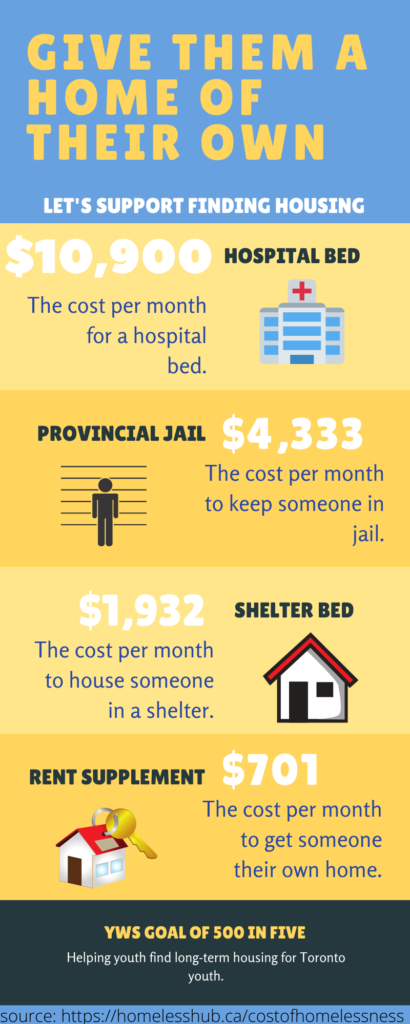
Shelter on track, executive director says
As to whether the shelter will meet their goal, Doherty says that they are on track. “We’re anywhere between … 40 to 60 people per year are going about finding stable living. We need to up that to 100 people per year.” This may be considered overly optimistic during this COVID-19 health crisis, but even before social distancing, the shelter was off to a slow start. Doherty says they expected to experience delays in the beginning but believes that an increase in momentum would help them set the pace for future success.
The hardest demographic to find housing for are those dealing with mental health and addiction issues. They require continued support from doctors, psychologists and counsellors. Without that support, people often cannot take care of their needs and end up returning to homelessness. YWS works within the social system to set up services that will continue after clients move out on their own.
YWS provides a family atmosphere
Doherty says a reason the shelter experiences such successes is due largely to the sense of family at YWS. He tells of a client we’ll call John, who had recently moved into his own place. The staff were so excited to see John, to hear all about his new home. “How’s it going in the new place?” they asked.
“Well, I don’t really like it.”
“Why not?”
“Because when I was here, I had 32 brothers and sisters.” John said, “And now I have my TV.”
YWS has some long-term beds where youth can stay until they are 25 if they follow the rules, including staying in school and maintaining a minimum grade average. This “Stay in School” program is a flagship program that enables the shelter to boast that clients who move on from YWS are educated and job ready.
A young man we’ll call Brandon walks into Doherty’s office. His face is glowing, and, in his hand, he carries a deed. Brandon had bought his own condo in Toronto. He attributes his success to the education he’d received while living at YWS. Brandon came back to share his victory and to celebrate with the staff. “Those moments don’t have any dollars attached to them, but they’re really great paychecks for all of us,” says Doherty.

